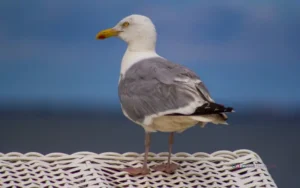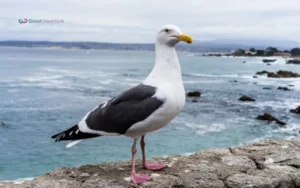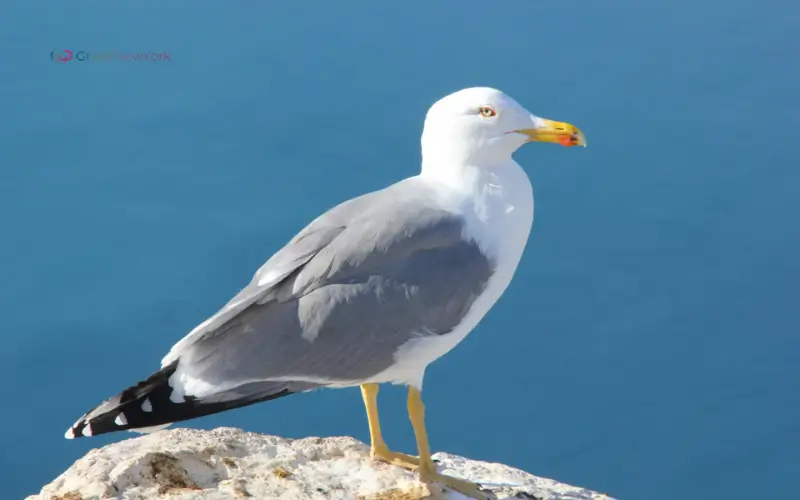Gulls and Seabirds to Seabirds
What Defines a Seabird?
Seabird refers to any bird that is dependent on the marine environment for food and other associated needs. These birds are specially endowed for existence in marine ecosystems. They usually have protected feathers, robust wings to carry through long distances to search for food in sparse conditions, and ways of identifying distant fugitives. Compared to most seabirds, gull-associated birds are quite interesting given that they inhabit a wide area in shoreline regions.
Gull Related Species
Gulls are in the family called Laridae The Laridae family is made up of gull-like birds, coastal birds, terns, and skuas. These seabirds are predominantly social in habit every year breeding along the shores, rivers, and other inland waters are colonized by these gulls. Popularly identified by their characteristic and unique sounds, these birds are sighted both in uncontrolled environments as well as in human-dominated zones inclining towards residential or commercialism.
Some Common Gull Associated Seabirds
Devoted the Herring Gulls
The characteristics associated with Herring Gull are Gray wingtips, white head and body, and a yellow bill. They are mostly aquatic birds though they can be found in any region far from the oceans and large lakes. Other gulls SK Port possess corresponding characteristics, but usually are smaller in size and have marking rings on the bill. These close relatives were captured in coastal areas and are common in areas densely populated by human beings foraging for food.
Coastal Lebensraum
The Black-Backed Gull is larger than most of the gull species, which mainly prefer shores with rocky landscapes. These birds have fluently black wings and muscular type that allow them to control the coastal zones. Because of this, they can aggressively seize food from other seabirds related to a gull species and hence are often times seen as part of the common gulls in such regions. The black-backed gulls are seen in flocks, preferring to breed on cliffs and crags.

Habitats of Seabirds REL-FISH
Coastal and Island Ecosystems
Unlike the gulls, most of the related seabirds prefer areas close to the water bodies since the areas offer them enough food and nesting grounds. They are resident in coastal areas such as beaches, and rocky and island regions where they can have direct access to fish, Crustaceans, and other related marine animals. These habitats are also protected for many potential predators which also make it suitable for gull-like seabirds to hatch their young.
Urban Adaptations of Gulls
Surprisingly, many gull-like seabirds have tended to take up residence in cities and towns. The food scraps to which such cities and towns get access are easily found next to the coastal areas of the country. For this reason, they feed from garbage disposal bins and food-related markets, and they breed on roofs or other structures in towns. The ability to cope with the anthropized spaces proves that the bears are really intelligent creatures.
The Diet and Feeding Habits
Wild Diets in Seaborne Conditions
In their natural ecosystem, gull-related seabirds in particular feed on fish and other small marine animals including small crustaceans. They have effective implements for some wildlife with sharp beaks and legs to swim well, especially for catching prey in water. Many species also feed on insects and small animals that are resting on land on the sea shore.. Due to this kind of diet.
URBAN ENVIRONMENT
In urban dwellers, gulls feed at dump sites in search of food amid wastes, and at bins too. This ability to switch from one feeding time to the other depending on the available resources makes them favorable to changes in the environment. It is in the course of scavenging that their intelligence and ability to adapt to situations come out so clearly. That is why even utilizing human waste as a resource.
Several Distinguishing Factors
Comparison with Terns
Terns and gulls both feed and breed over coastal lands, but are different in form and mannerism. The term ‘Terns’ possesses some features that distinguish it from other similar birds of water; they have comparatively thin and elongated bodies, acute wings, and slender beaks. These birds are usually rather small and sprightly while gulls are stouter birds with broad wings. As far as concern the behavior terns are more likely to be encountered in smaller numbers, while gulls breed in larger colonies.
Contrasts with Albatrosses
Another group of rather widespread seabirds are albatrosses, which also differ from gulls in the size of a bird’s organism and the way it flies. Albatrosses are much bigger birds with wingspan of up to 4 meters. These birds are also long-distance migratory while gulls are comparatively local and are versatile for they can inhabit different types of environments.
New Features of Gull-Related Seabirds
Flight and Navigation Skills
Another one of the gull-related seabirds’ adaptations is flight Flying Among the most outstanding attributes-semi-essential adaptations of these seabird related to a gull flight. It may be noted that these birds can perform hover, glides, and diving with a lot of accuracy. It is found that they are good in map and compass work, they hunt for food with the help of their eyes and can also remember the path to be followed while migrating over a long distance.
Behavioral Adaptations
Gulls are not stupid and can find food where there is none, or so it seems. These have been observed using equipment, for instance, dropping shellfish on a hard surface to open it and also hunting and gathering their food. These behavioral changes enable them to live and reproduce in coastal and urban landscapes, and that means they can cope with just about any obstacle and live in almost any terrain.
Gull-Related Species of Seabirds
MigrationDifferent Seasons
Most of the gull-related seabirds are migratory and may move in thousands of kilometers to find foods and breeding sites. It may be cyclic or group to be the migratory patternation which some of it used to travel to a certain area within certain years. These cyclic movements assist them exploit the food supply situations and weather conditions in various areas.
Influence of Climate Change
The mobility of similar species, gull-like seabirds, also seems to be impacted by climate change. They note that due to shifts in weather and availability of food in the region, their normal migration is affected. It means that some gull species have already altered their migratory patterns, while others are changing their nesting preferences as a response to the changes in marine systems.
Breeding and Nesting Habits
Nesting Location and Material
It is usually seen that gulls nest on cliffs, sandy shorelines, or on roofs. They collect materials like grass, seaweed, and twigs to provide a safe and secure nest where they lay their eggs. The exact environments in which they nest offer some kind of shield from the predators to their young ones.
Parental Care Among Seabirds
Incubation of eggs and provision of food to the chicks is deemed by the male and the female gulls alternatively. This cooperation is providential for protecting their young in considerably adverse conditions. Nurturing of chicks by parents is also important in gull-related seabird lives, and they both feed their chicks, showing a good parenting example, thus ensuring a healthy life for seabirds.

Threats to Gull-related Seabirds
Environmental Pollution
Hazards associated with floating plastics and oil affect gull-related types of seabirds. These pollutants can pollute their environment and in doing so affect the beasts’ overall health and food chain. Only through the minimization of the number of wastes that enter our seas and oceans, it is possible to guarantee the future existence of such species of birds.
Populations of Seabirds.
Food and nesting grounds for gull-like seabirds have been scarce due to effects such as overfishing, habitat loss, and urbanization. These human activities constitute big threats to their existence as well as population size. These problems must be covered to protect such species by conservation.
Conservation Measures Gull-Related Seabirds
Coastal Habitats Restoration
It is important to defend and revive different coastal habitats in order to guarantee safe habitats for gull related seabirds. Reconstructing beaches and islands guarantees that they provide adequate nesting grounds and food for these birds.
Conserve Marine Environment
Conserving and managing the marine environment is important in the conservation of gull-like seabirds. Measures such as cutting pollution, promoting certification of sustainable fishing, and supporting habitat conservation programs present the prospects that these species will be able to sustain themselves in the future.
FAQs
Which of the seabirds are gulls closely related to?
These include the Herring Gulls, Black-Backed Gulls, and other Gulls that tend to be more coastal.
Seabird adaptations: how do gull-related seabirds fit into those environments?
They have well-developed ability for flight, feeding habits related to scavengers, and high orientation sense.
Where Gull like Seabirds be found?
They live along seashores and islands and occasionally in towns that border water sources.
What does a seabird, associated with gull, eat?
It consists of fish and crustaceans and sometimes human remains residue.
Seabirds: Are gull-related seabirds migratory?
Of course, some animals move from one area to another due to food and weather conditions all year round.








